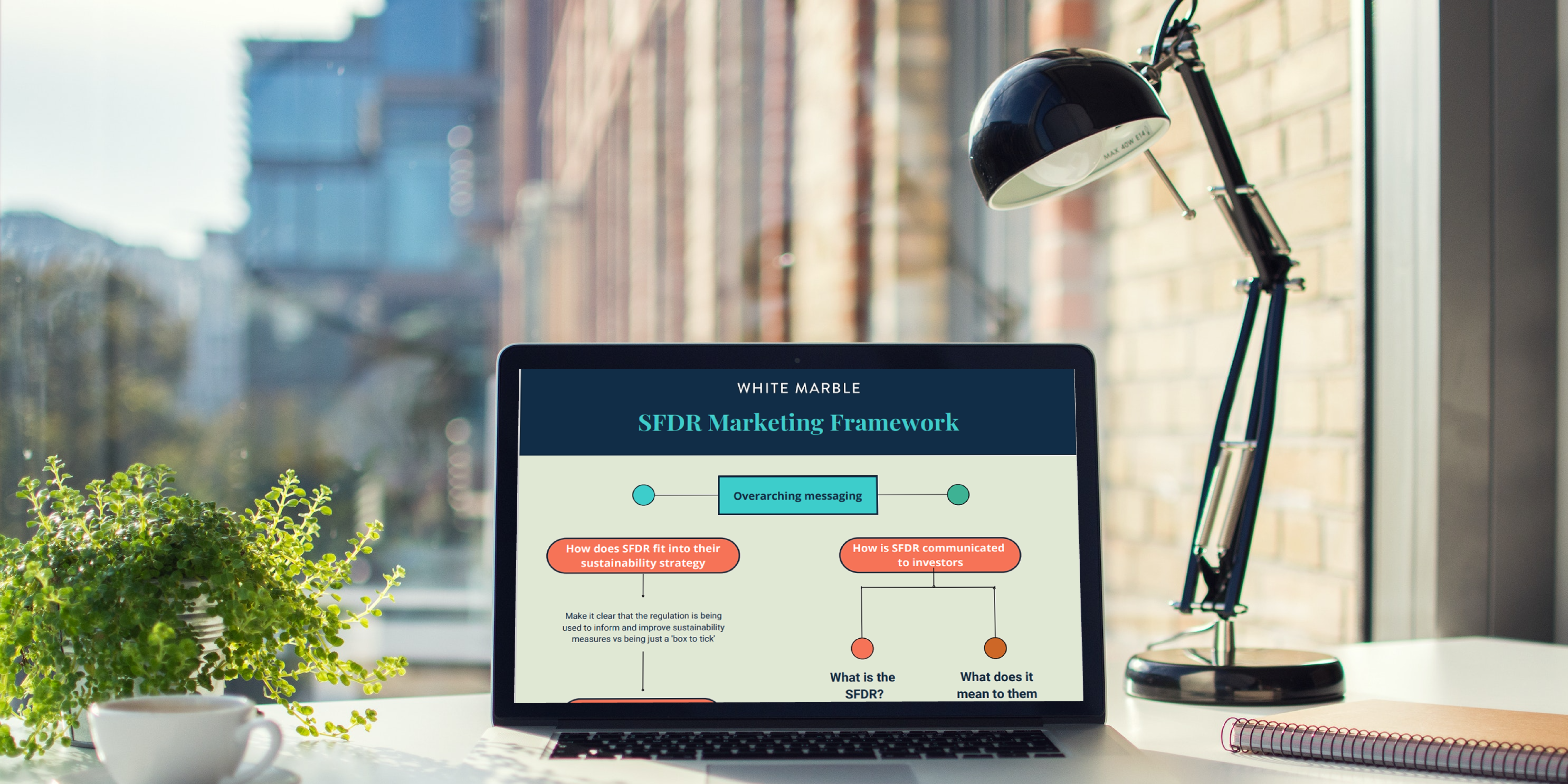What is the SFDR?
The Sustainable Finance Disclosure Regulation (SFDR) is a component of the European Commission's Action Plan on Sustainable Finance. It was introduced in accordance with the EU’s goal of reaching Net-Zero by 2050, in line with the Paris agreement.
The SFDR is an incredibly complex topic, but over the coming weeks we’ll try to break it down for you.
Why was the regulation put in place?
The SFDR’s most tangible aim is to deter ‘greenwashing’ and make sustainability claims made by financial market players (FMPs) and financial advisors (FAs) more transparent. It intends to offer investors a clearer picture of the sustainability profiles of the assets they’re invested in, making it easier to accurately compare them.
The broader goal at play here is to guide the flow of investment in Europe towards sustainable investments. The regulation empowers investors by allowing them to make more informed and ESG-conscious investment decisions.
So what does that actually mean?
Investment products are labelled as Article 6, 8 or 9 funds and must provide certain disclosures in line with their categorization. Article 9 funds (also known as dark green) have sustainable investing as their specific objective, whereas Article 8 funds (also known as light green) only incorporate environmental and social characteristics among others. Article 6 funds – the default categorisation – have a limited sustainability impact, and their labelling shouldn’t include references to sustainability or ESG.
How have the regulations changed?
The SFDR, which came into effect in May 2021, establishes standards for reporting on both the entity level (i.e., the investor) and the product level (i.e., the fund).
By June 30th 2022, financial market participants were encouraged to incorporate ‘best effort disclosure’ into their annual reporting, with this regulation becoming mandatory from January 2023. The January 2023 update is intended to improve product-level reporting, while exhibiting compliance with the environmental goals outlined by the EU taxonomy.
- January 1, 2023 - Pre-contractual disclosures for products promoting environmental or social characteristics
- June 30, 2023 - Final date to report on PAIs of investment decisions in 2022
- June 30, 2024 - Final date to report for the second time over reference year 2023 on PAIs of investment decisions
Downgraded funds and ‘the great reclassification’
With the January update coming into effect imminently, we are seeing a marked shift in how funds are being categorized.
In what has been dubbed ‘the great reclassification’, firms including Amundi, BlackRock, Axa, Invesco, NN Investment Partners, Pimco, Robeco, and Deka have all recently downgraded 'dark green' Article 9 funds to 'light green' Article 8 status in anticipation of the European Union's upcoming SFDR deadline.
According to ESG Clarity, a quarter of all Article 9 funds – as many as 1500 – are at risk of having their status revoked. This is because they are either failing to meet the necessary criteria in terms of furthering sustainable initiatives, or have not provided the necessary statistics to corroborate their success in this area.
In September FE fundinfo made the point that ‘It will be interesting to see which way this goes – will Article 9 funds tighten up their investment criteria or will groups start to reclassify their funds as Article 8, which has no minimum requirement for sustainable investment?’
It seems that, amid fears of greenwashing accusations, fund managers are opting for the latter option. It has been announced that over 130 funds have been downgraded to Article 8 status, as of November.
Hortense Bioy, Morningstar’s Global Director of Sustainability Research, noted that – for now – Article 9 is ‘still attracting money’. Despite this, we must also recognise that ‘some managers are reporting lower client appetite because of both reclassification and greenwashing concerns.’
Where does this leave the SFDR?
Earlier this year, MainStreet Partners, an ESG advisory and analytics firm, compared Article 8 and 9 funds with their own ratings. They discovered that roughly a fifth (21%) of funds classified as Article 8 had an ESG fund rating from MainStreet Partners of less than 3 out of 5, which meant that the agency would not classify them as ‘sustainable’.
Furthermore, according to a research by Clarity AI, more than 10% of the 750 Article 9 funds it examined had exposure to businesses that ‘violate’ the norms of the UN Global Compact or the OECD Guidelines for multinational firms.
These criticisms, coupled with an ‘exceptionally unclear’ framework, (Volhard, partner at Debevoise & Plimpton) leaves many questioning the credibility of the SFDR completely.
Now, we could get into the nitty gritty of Sustainability Risk and PAI disclosures – and we haven’t even scratched the surface as to how this regulation compares to that of other territories – so we’ll save that for our Live LinkedIn event, which you can register for here.
In the meantime, access our downloadable SFDR framework.
